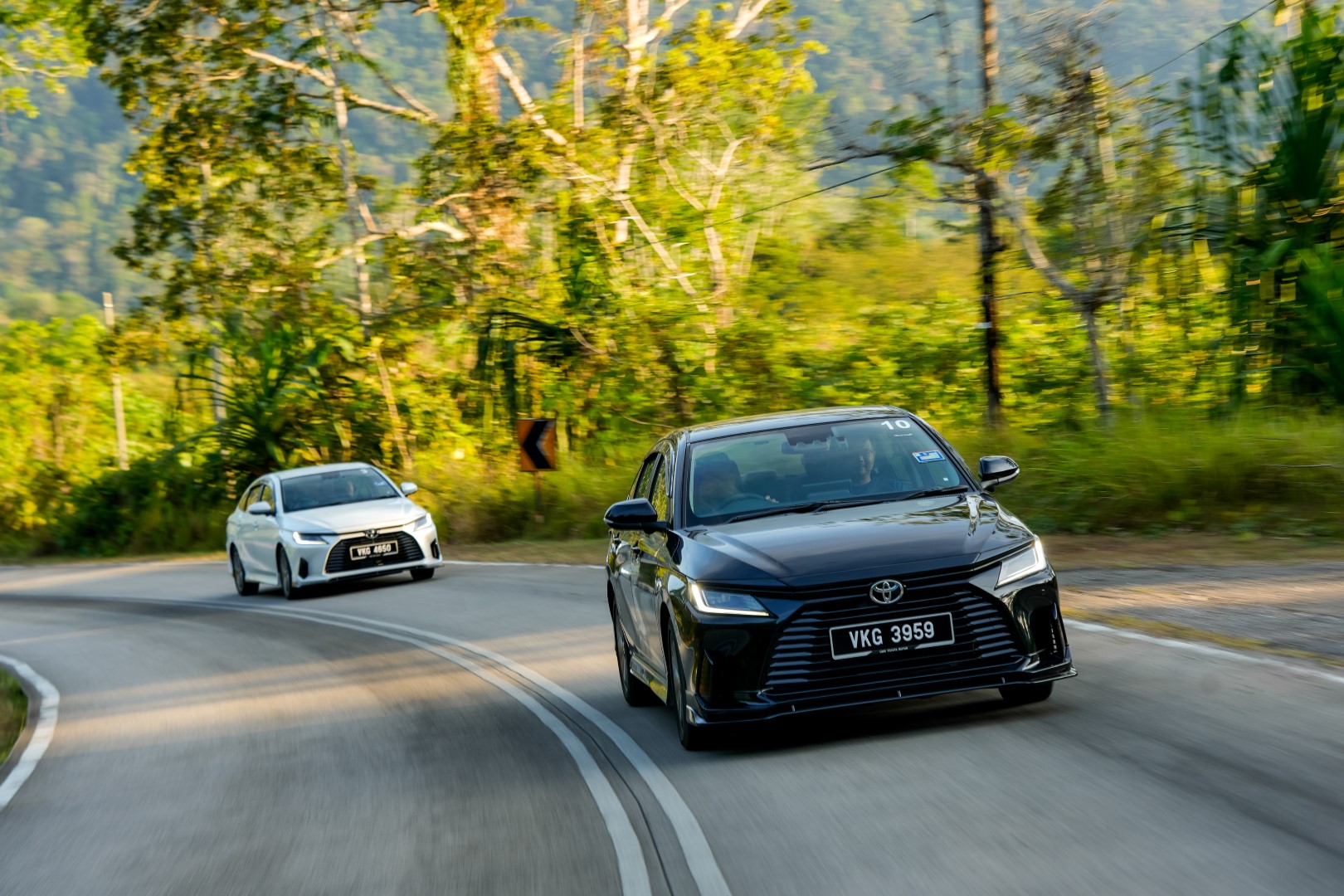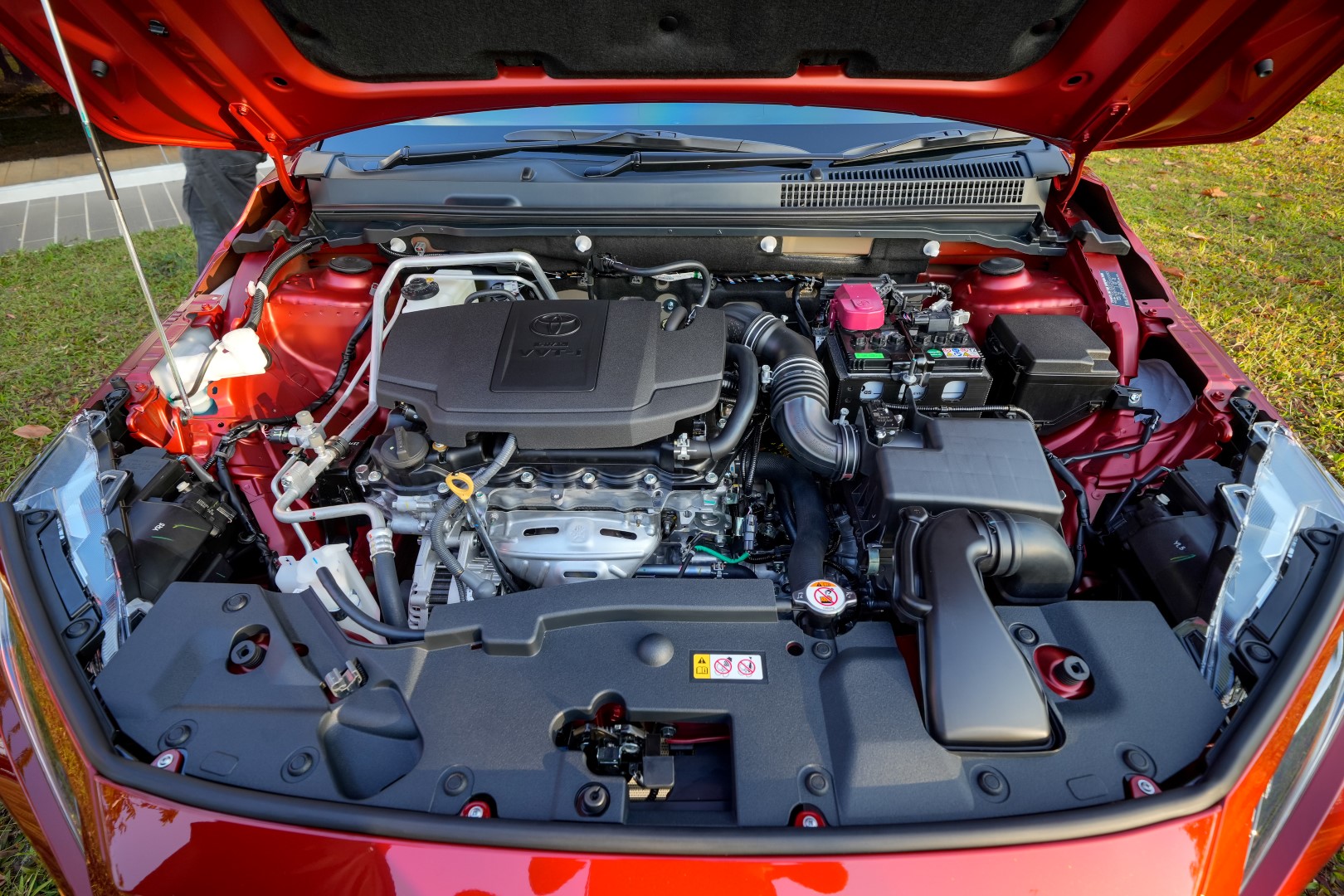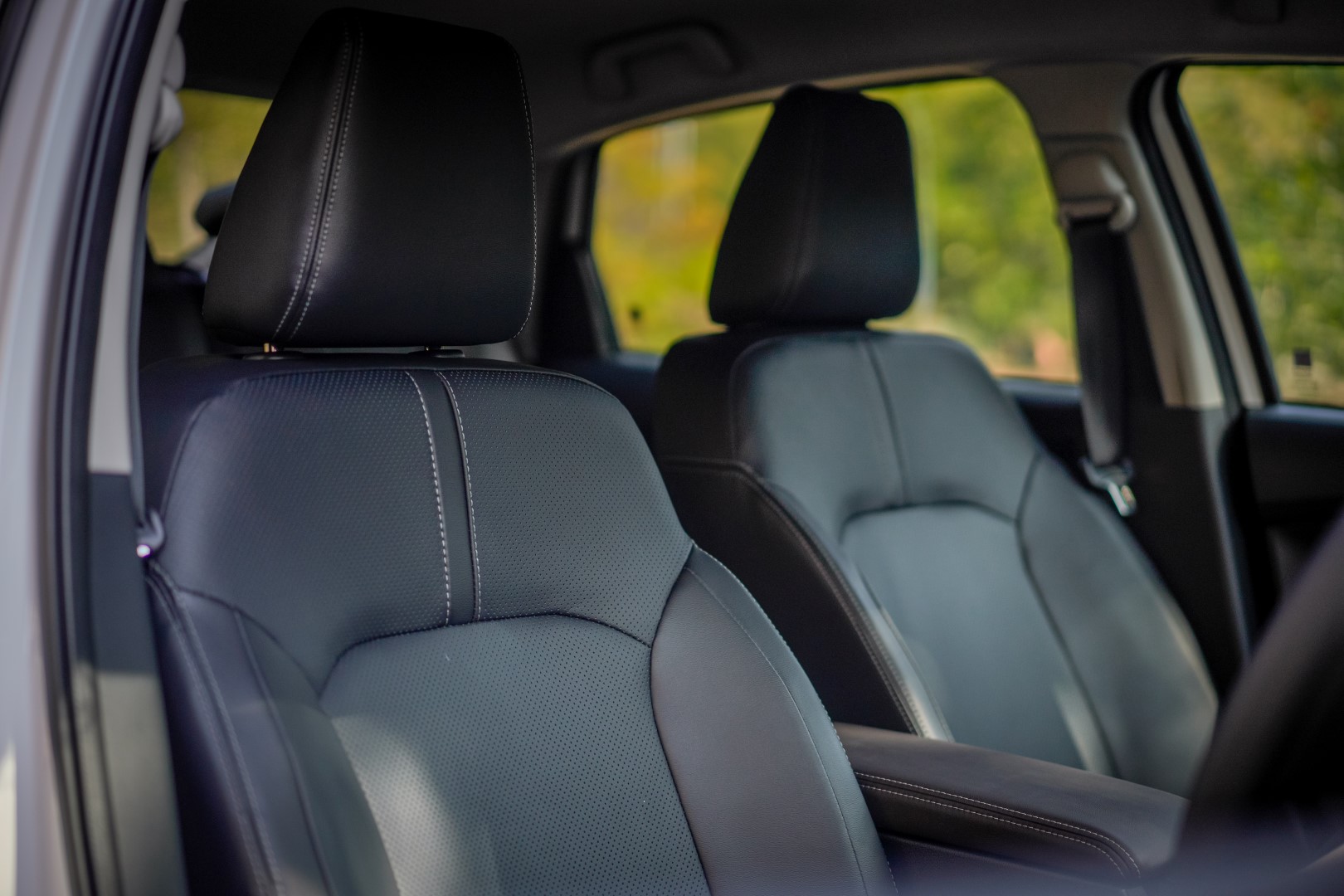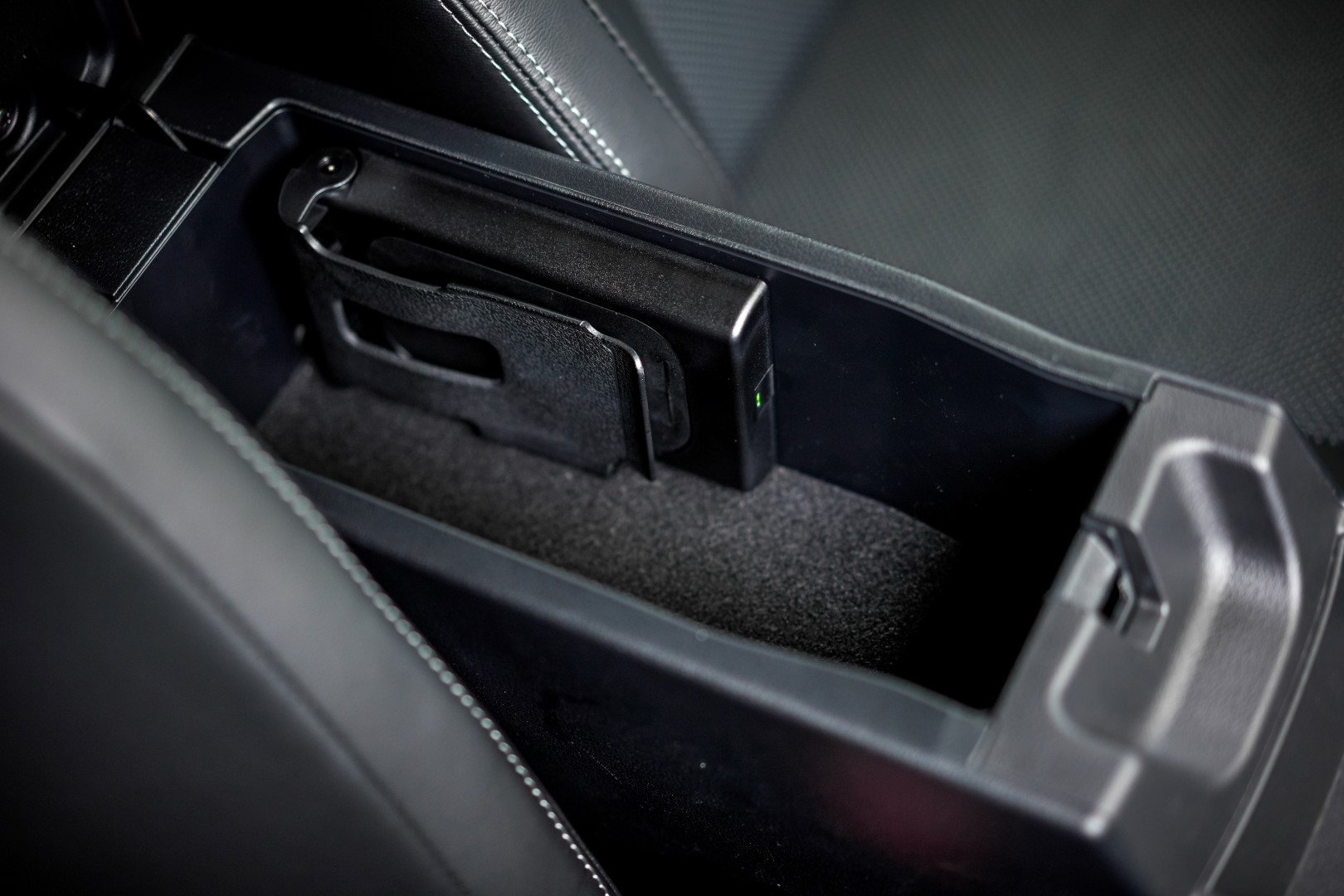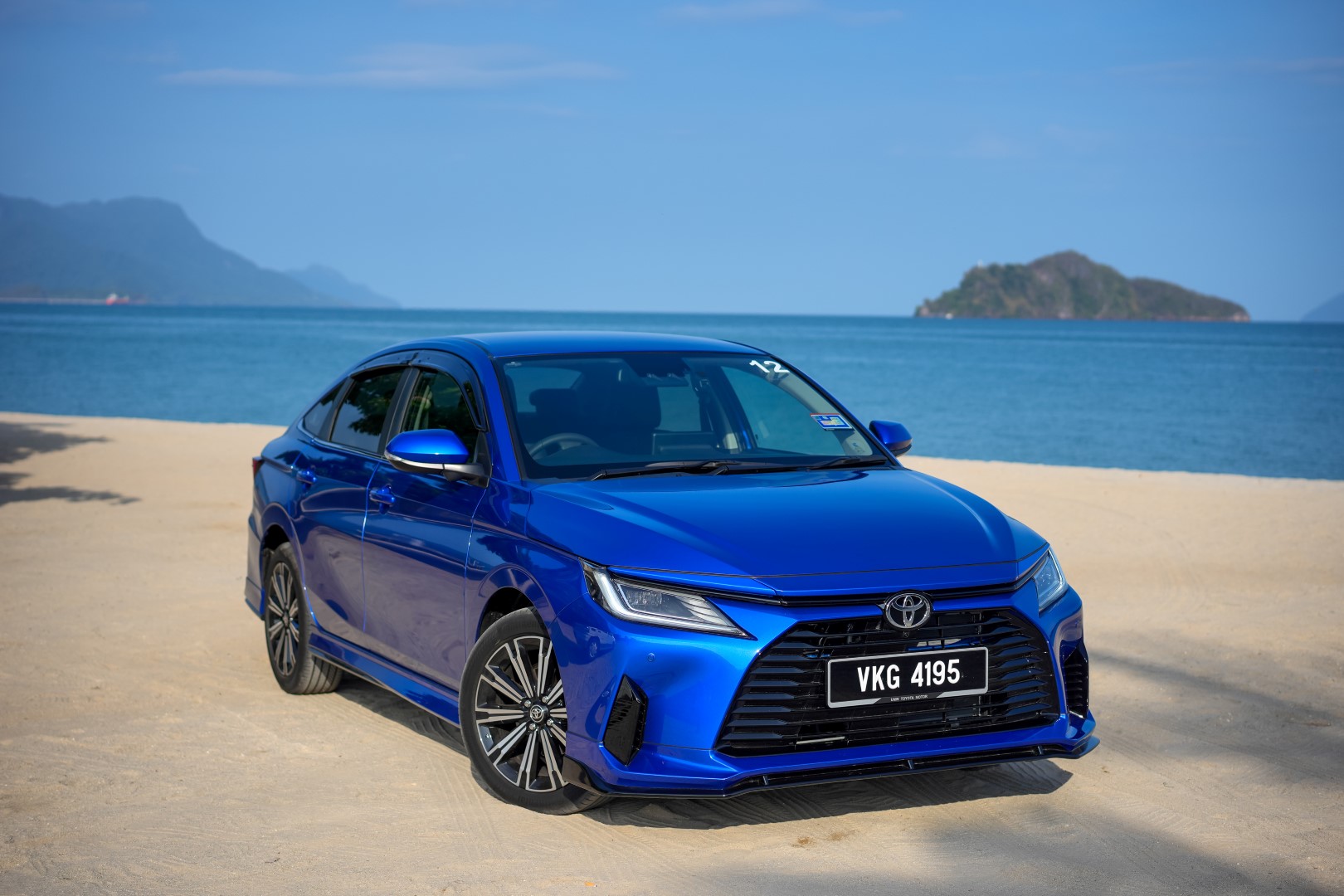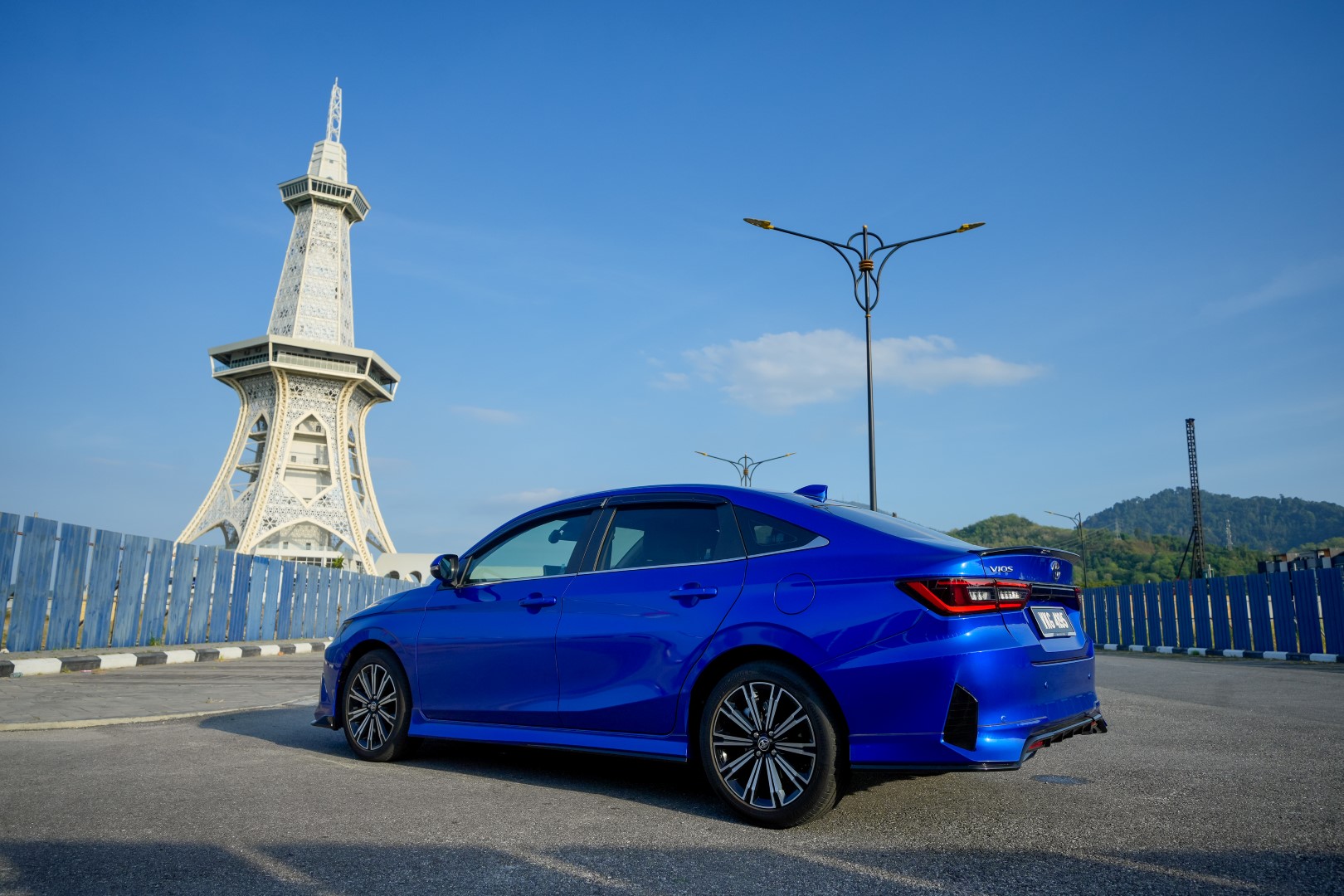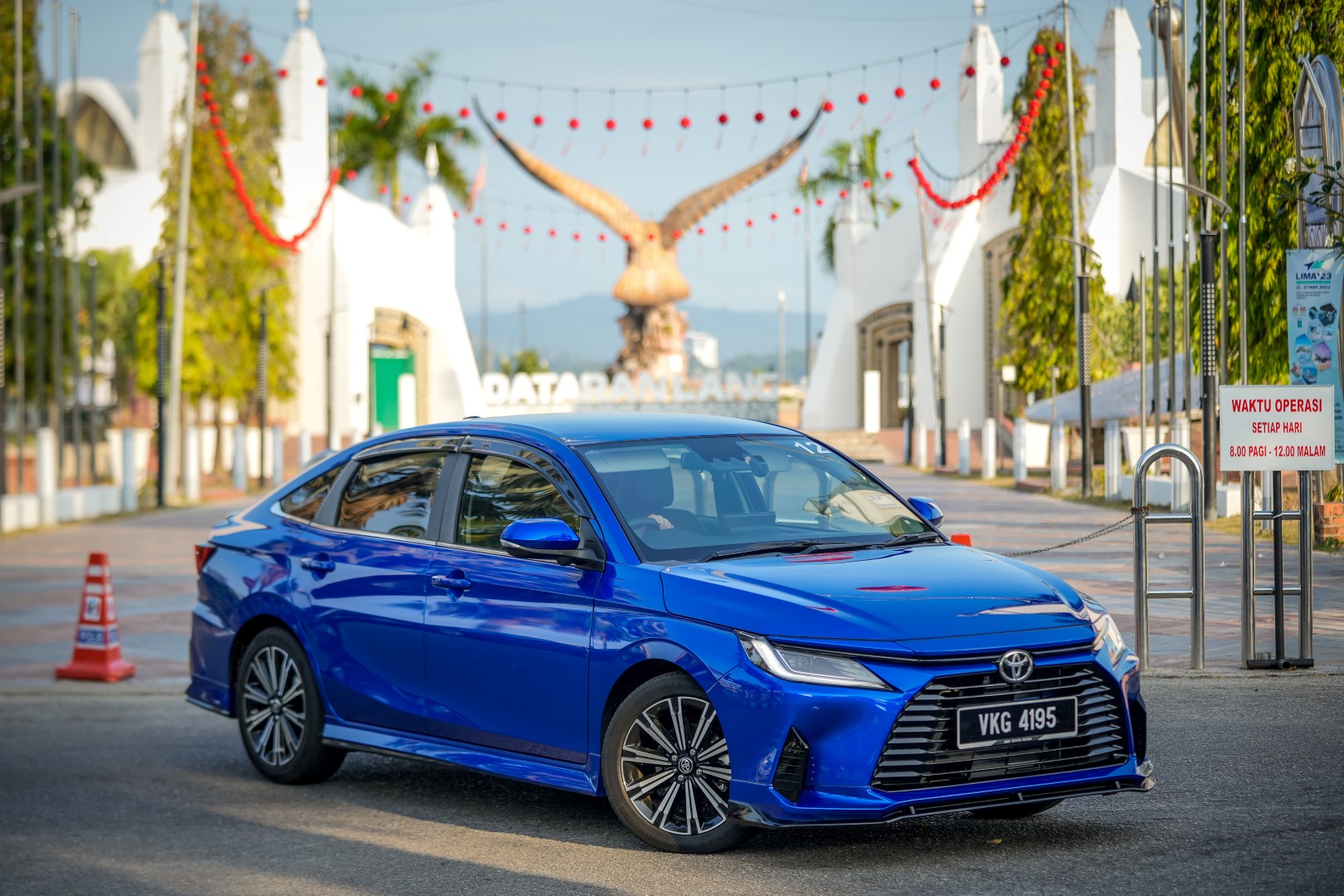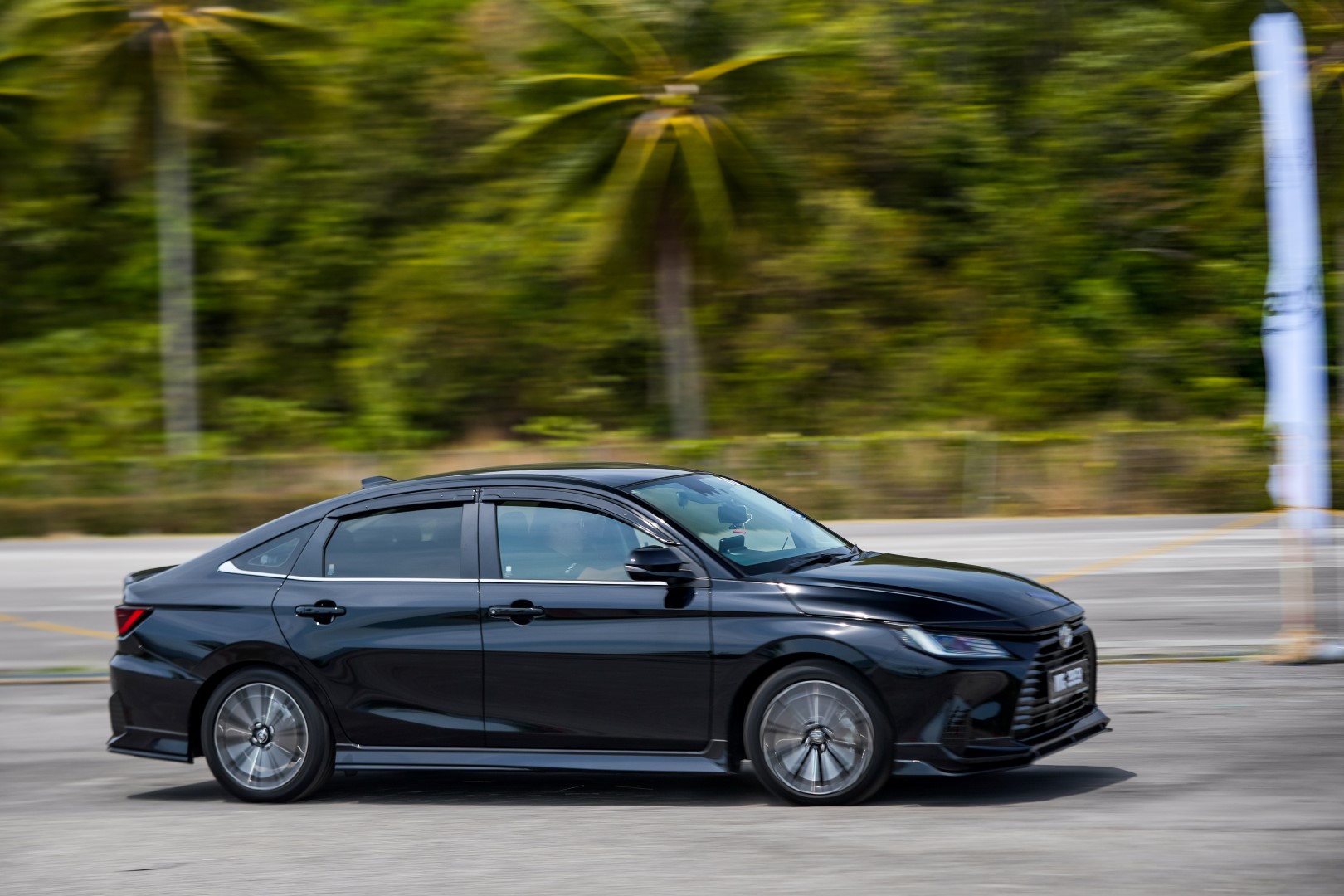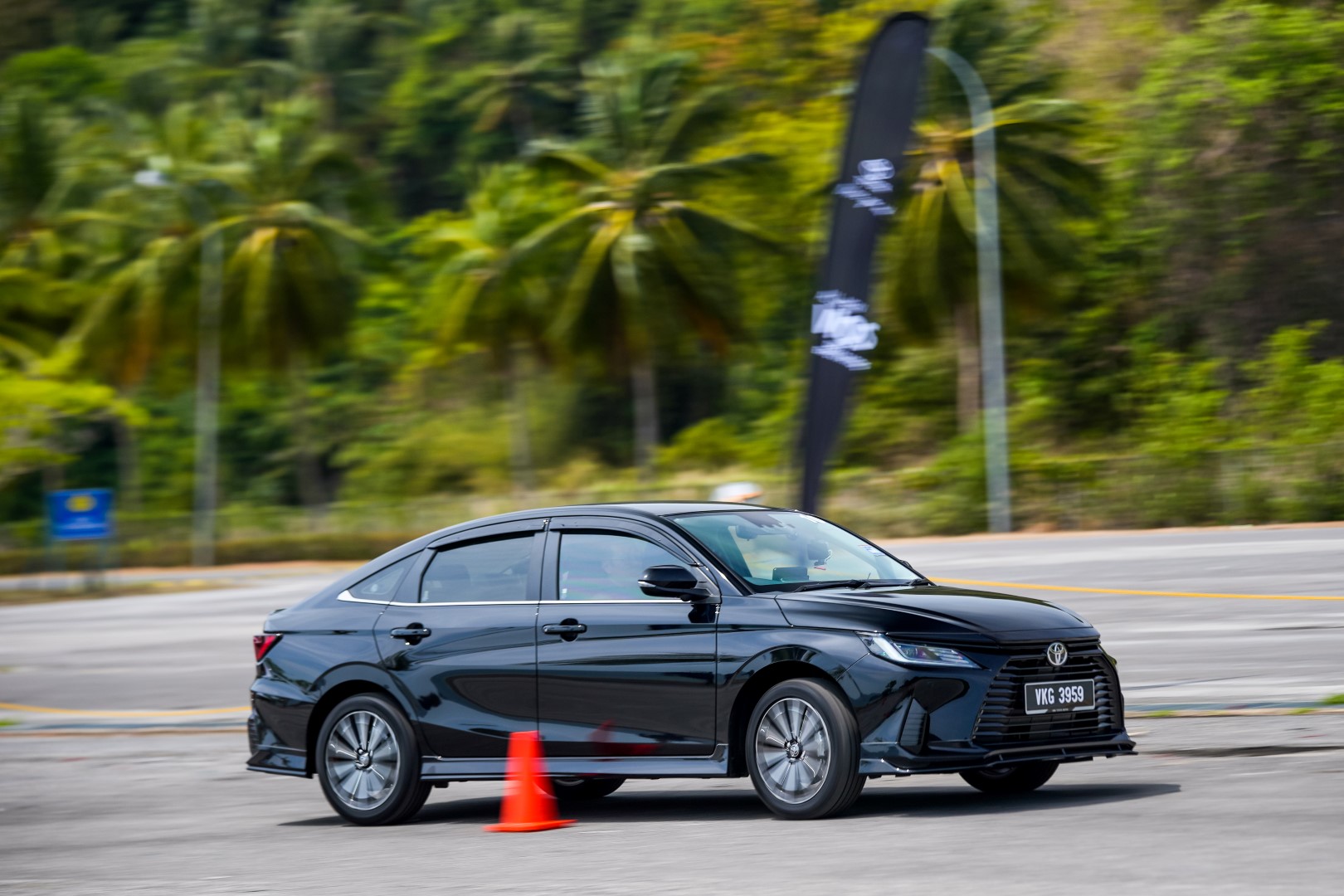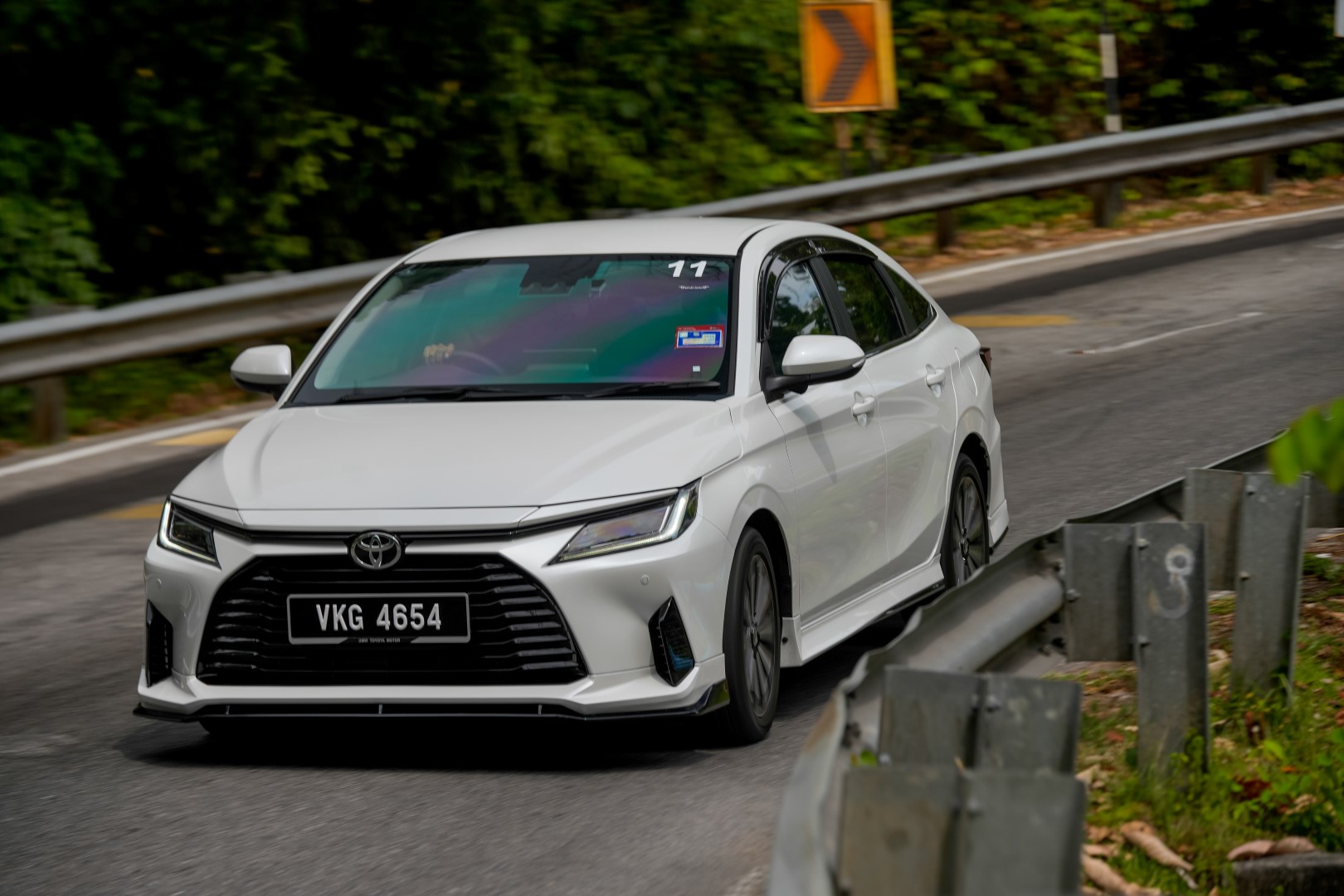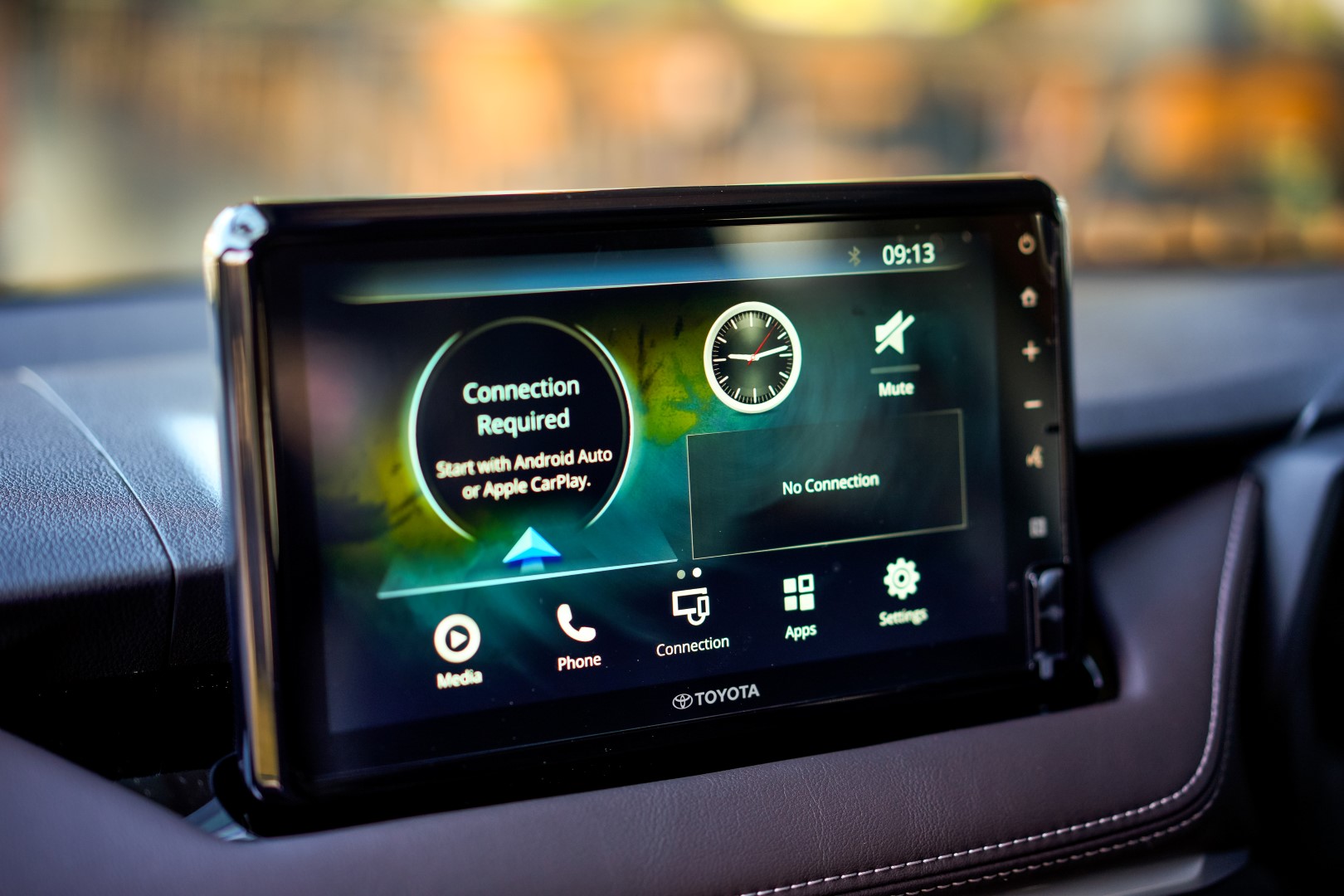Review: 2023 Toyota Vios 1.5G - The Baby Camry
It's still far from perfect, but there are improvements
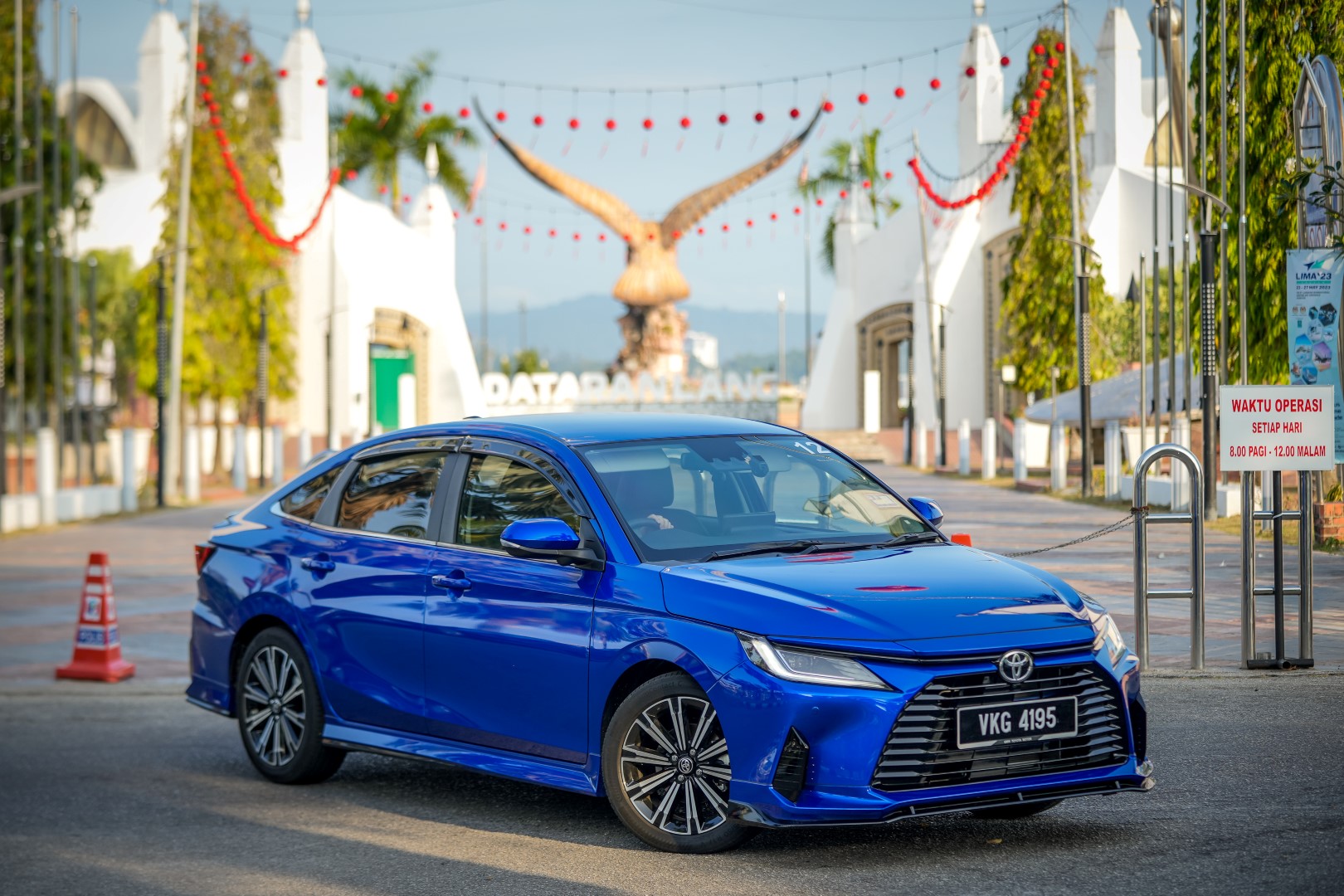
After nine long years, the third-generation Toyota Vios has finally given way to its successor, the all-new 2023 Vios which has gone through an extensive upgrade in many ways.
So, in an effort to get a first-hand experience and to see if it is any better than before, we were given the opportunity to spend a couple of days with the high-spec variant of the new B-segment sedan and here's our assessment of the car.
Overview

Underpinned by Daihatsu's DNGA platform (Toyota owns Daihatsu in case you didn't know), the all-new Vios is manufactured in Toyota's Assembly Services Sdn Bhd (ASSB) plant in Bukit Raja, Klang.
Powering the all-new Toyota Vios is still the same 1.5-litre DOHC Dual VVT-i engine as before which produces 106 hp and 138 Nm of torque, but paired with it is a new D-CVT gearbox with seven virtual gears, also developed by Daihatsu.
In terms of dimensions, the Vios is now 5 mm longer, 10 mm wider, and 5 mm taller, standing at 4,425 mm long, 1,740 mm wide, and 1,480 mm tall. Most importantly, the wheelbase is now 70 mm longer at 2,620 mm, translating into a more spacious cabin.
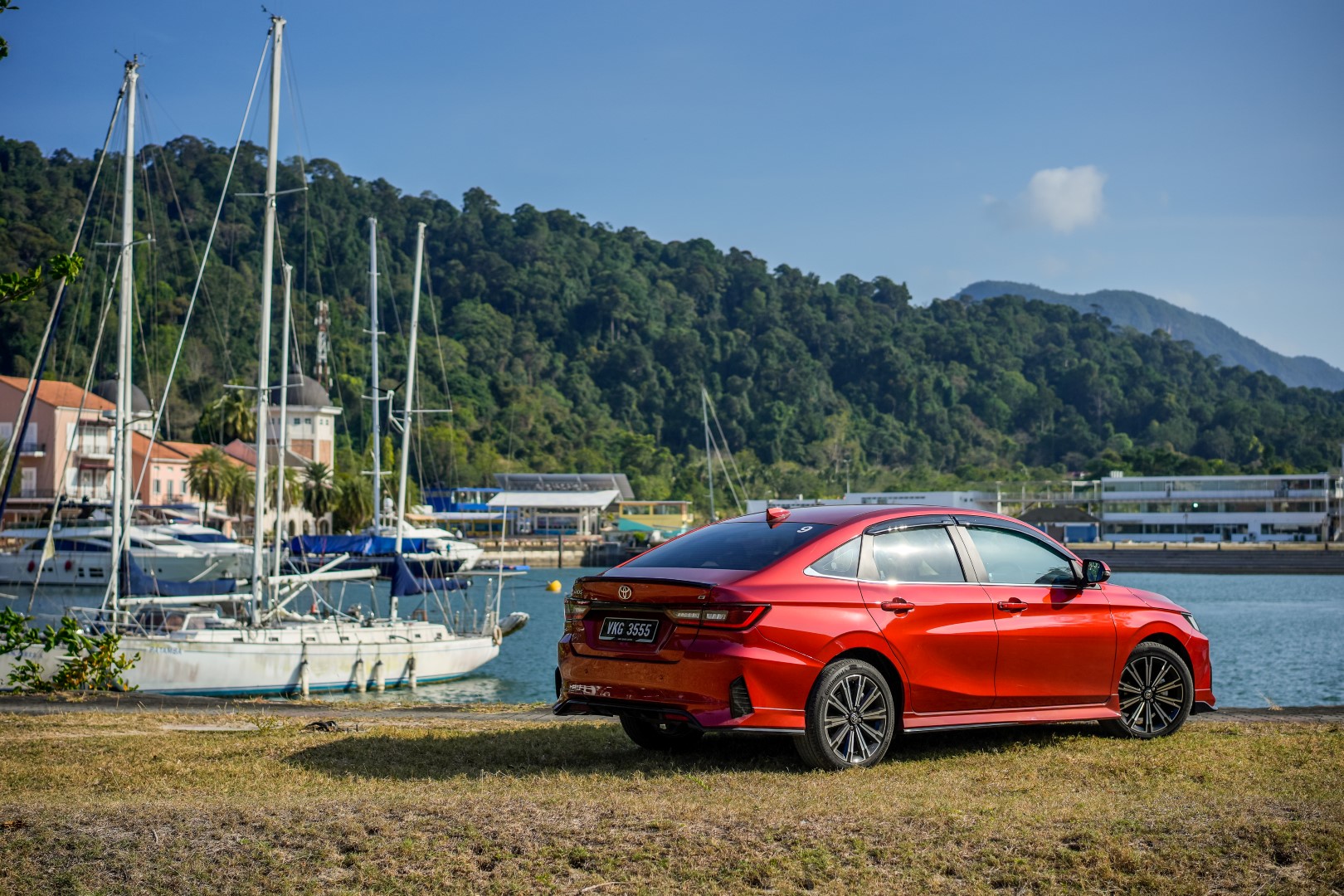
On the exterior of the Vios 1.5G, highlights include a fastback-ish silhouette, LED headlights with DRLs, LED taillights with sequential turn signals, a functioning vortex generator on the front bumper, as well as lips on the front and rear bumpers and a rear spoiler for the high spec G variant. The wheel size has also grown from 15-inches to 17-inches.
Inside, the list of features include a 9-inch touch-screen infotainment system with wireless Apple CarPlay and Android Auto, wireless charging, two rear USB Type C ports, leather seats all around, a generous dose of soft touch material on the dashboard and door panels, piano black trims on the doors, rear air vents, paddle-shifters, an Electronic Parking Brake, a 64-colour ambient lighting system, a 360-degree panoramic view monitor, parking sensors all around, and a fully digital instrument panel.

The list of safety and driver assistance features has also grown longer, from having only Pre-Collision System (PCS) and Lane Departure Warning (LDW), to having Lane Departure Prevention (LDP), Lane Departure Warning (LDW), Front Departure Alert (FDA), Adaptive Cruise Control (ACC), Lane Keeping Control (LKC), and Auto High Beam.
Available in five colour options with Spicy Scarlet being a new choice, the all-new Vios comes with 5-years/ unlimited mileage warranty, 24SEVEN Road Assist services, and a free three-year subscription to the Toyota Vehicle Telematics System which monitors the car’s location at all times.
Pros
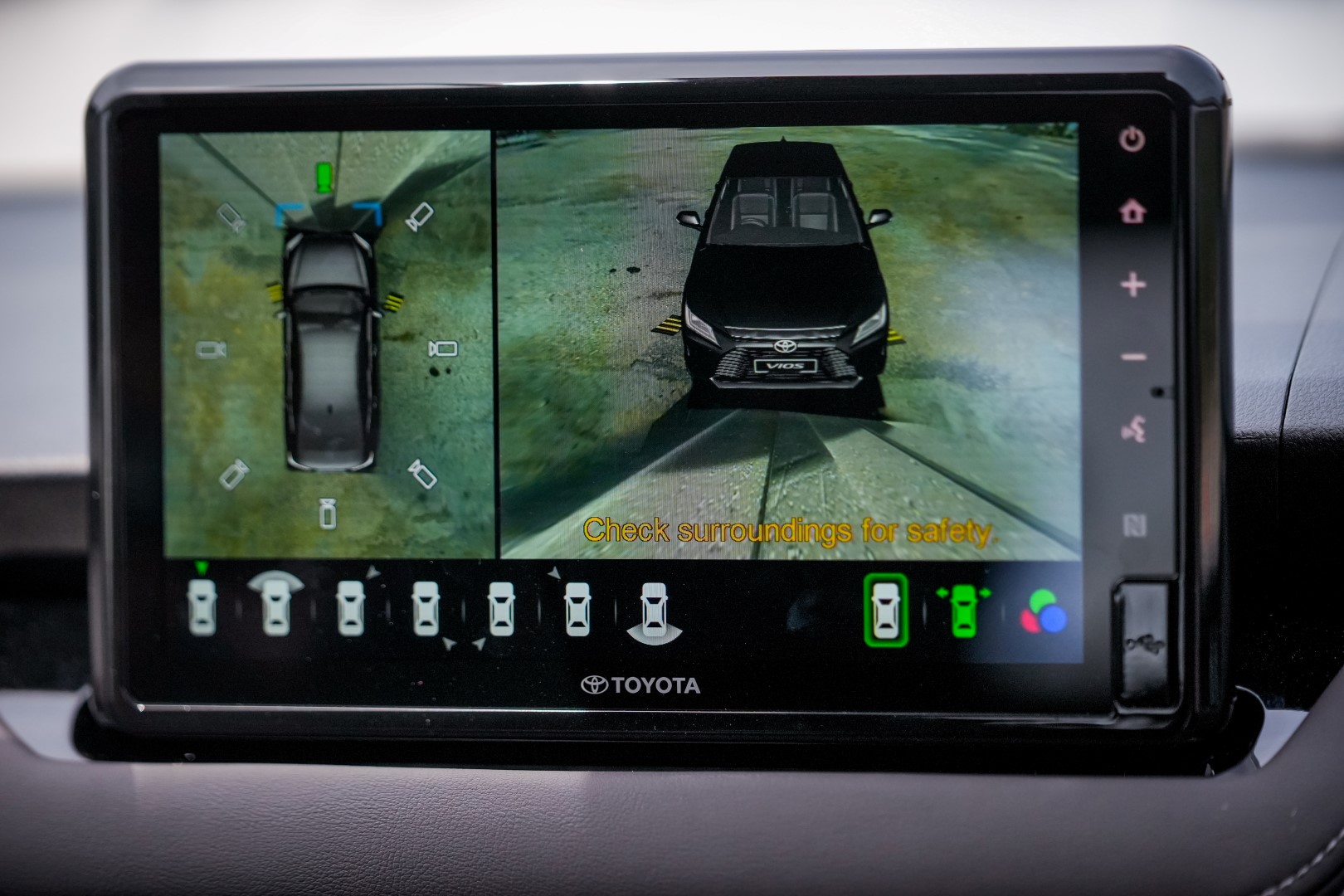
On the upside, the Vios looks more premium now thanks to its design that is heavily inspired by the Camry. In fact, one wouldn't be wrong to call it a "Baby Camry" as the front end, the headlights, the grille, and the bumper design are almost identical, just smaller.
Adding to the whole premium look are the LED taillights with sequential turn signals which are quite rare in the B-segment.
Similar to the exterior, the interior also looks much more luxurious than before. Unlike the outgoing model's "plasticky" cabin, the new Vios comes with a generous dose of soft-touch material on the dashboard as well as the door panels.
Speaking of door panels, the G variant here comes with a nice piano black finish that is very pleasant to the eye. The new leather seats in the Vios 1.5 G are also commendable as they provide great level of comfort and support, making the car ideal for long distance drives.

The new 9-inch touch-screen display infotainment system was also brilliant. The system, which is similar to what is offered in the Corolla Cross, comes with wireless Apple CarPlay and wireless Android Auto which could be accessed by our mobile devices quickly and easily.
Further complementing the high-resolution central display was the fully digital instrument panel which reminded us of the Perodua Ativa.
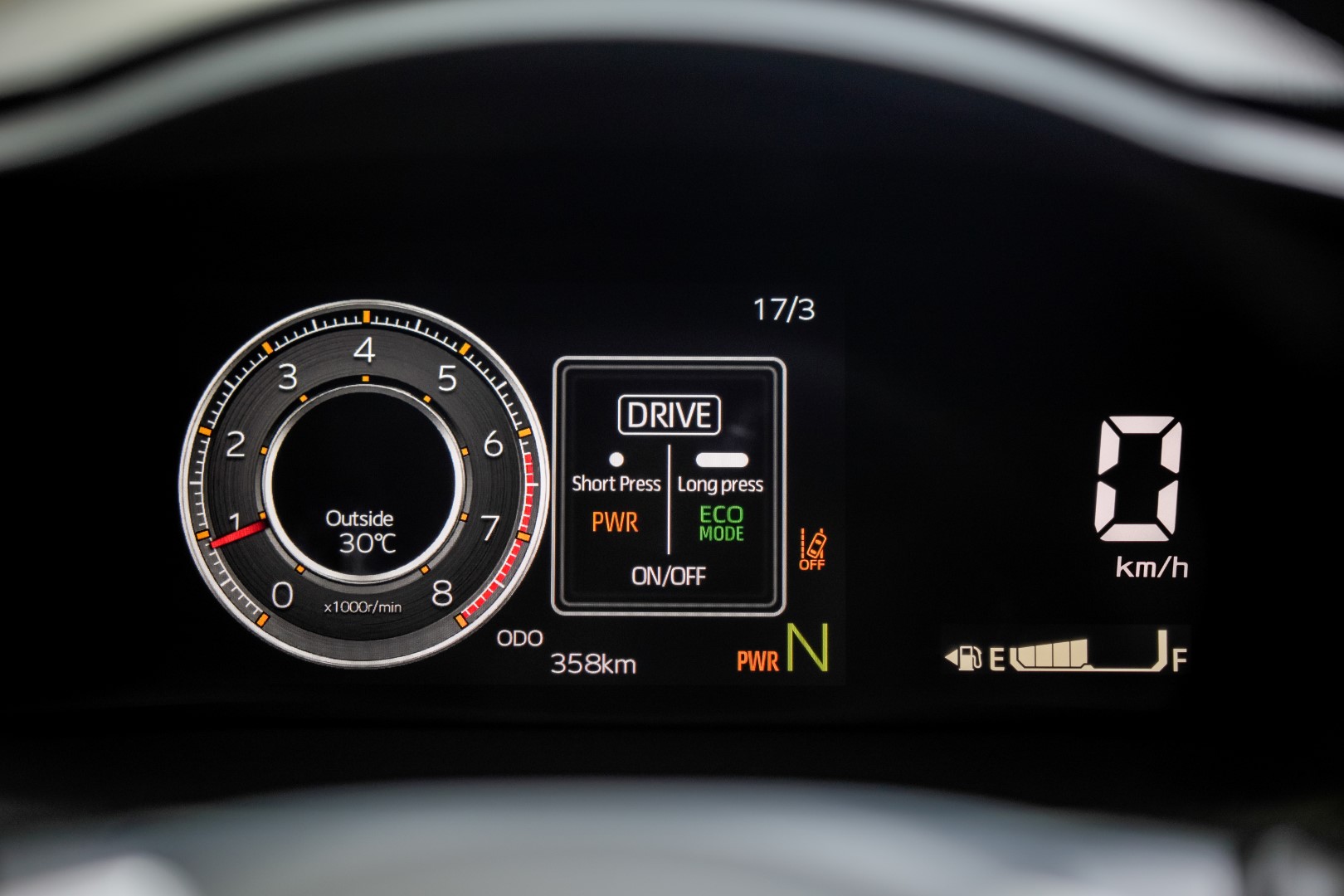
Speaking of the Ativa, the new Vios also comes with two cupholders at each end of the dashboard like what you get in the former, which is a big plus point at this day and age considering how often we head to McDonalds and Starbucks drive thru restaurants.
And then we have the rear air vents which is also an improvement versus the outgoing model. Sitting right below the air vents are two USB charging ports (one is Type-C) which add to the convenience of occupants.

All the visible things aside, the biggest strength of the new Vios is actually its chassis. Although it has reduced the car's weight by 110 kg, the Daihatsu New Global Architecture (DNGA) chassis is more rigid than the outgoing model's chassis, resulting in a car that is sharper and much more agile than before.
Not only does the Vios handle corners impressively, but it is also able to respond to sudden steering input to change directions precisely without losing composure. And now that we have paddle-shifters, driving the Vios along twisty bits is much more exciting than ever before.

Even though the engine produces the same 106 hp and 138 Nm as before, the fact that it has lost 110 kg makes the Vios feel noticeably lighter and more agile.
In addition, the cabin is also much quieter than before, thanks to the windscreen and front windows that are all made of acoustic glass now. The only noise you hear is the engine note which becomes apparent after 3,000 rpm.
Besides that, road noise, wind noise, and other noises from the surroundings are all so well insulated now. Since the gearbox is a CVT, the infamous rubber band effect is still there but it is barely noticeable.
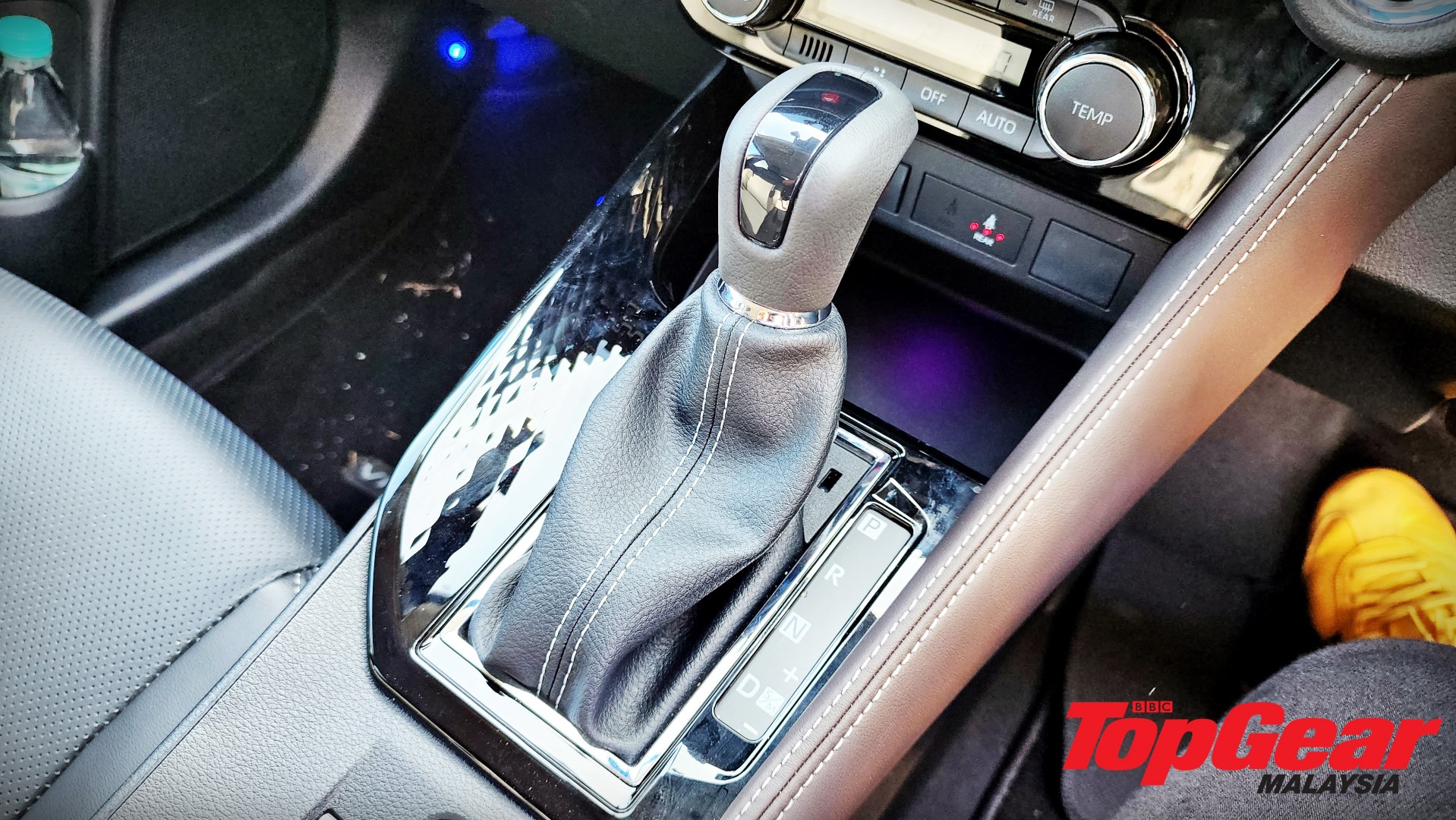
Cons
As fun as it was to drive the all-new Vios, there were also a few noticeable flaws. Firstly, the car doesn't come with a spare tyre.
Instead, what you get is a hidden storage compartment under the boot floor and a tyre repair kit. According to the folks at Toyota, this was done to shed some weight off the Vios and to give owners more room to store their things. What would you rather have?
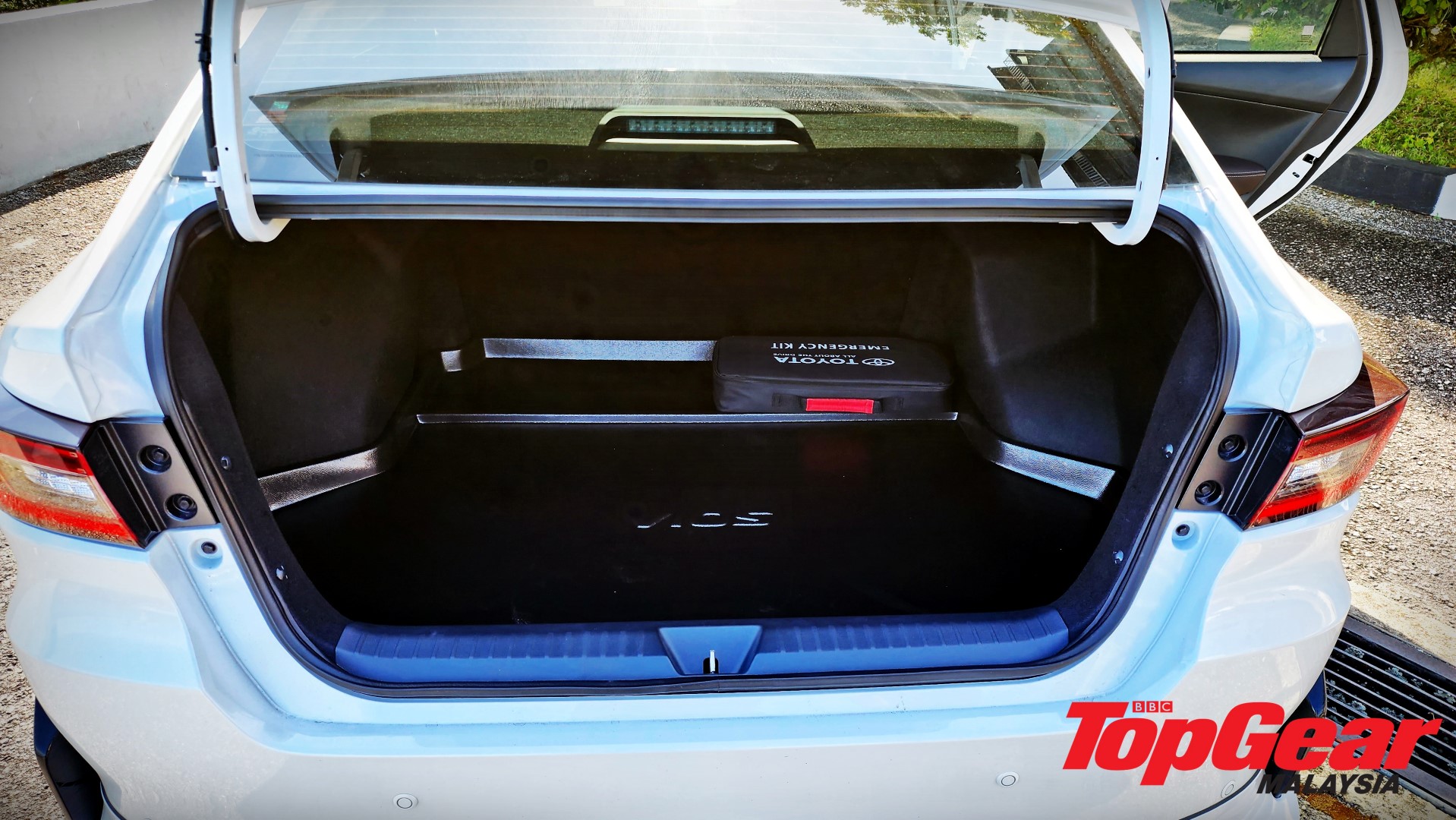
And then we have the new "fastback"-ish design of the Vios with a low-slung roof which has resulted in less headroom than before in the rear.
From what we experienced, anyone taller than 170 cm will have issues as his or her head will be touching the roof. So, if you're going to be travelling with lanky individuals on a regular basis, this will definitely be a problem.
In addition, the rear seats don't come with an armrest and they cannot be folded. Although there is a lot of boot space, it is going to be impossible to fit long objects or furnitures into the car.

Last but not least, we have the funky wireless charger in the centre-console which requires you to slot in your phone sideways into a holder in order for it to charge, unlike the usual wireless charging dock on which you just have to place your phone for it to start charging.
The issue with this charger is that phones with thick casings don't fit into the holder, so you will have to remove the casing every time you want to slot it in.

Conclusion
In a nutshell, it is safe to say that the pros of the all-new Toyota Vios somewhat outweigh the cons, which means that it is a better car overall.
Some may argue that the engine is too old but why fix something that is proven and not broken? The gearbox is new anyway.

Thanks to the new DNGA platform and the new D-CVT gearbox with paddle shifters, the Vios G is much more enjoyable to drive now, and the level of comfort and refinement in the car has improved significantly, making it the most luxurious and refined Vios ever.
Further complemented by the long list of driver assistance features and the stylish new design, the Vios surely feels like a Baby Camry.
